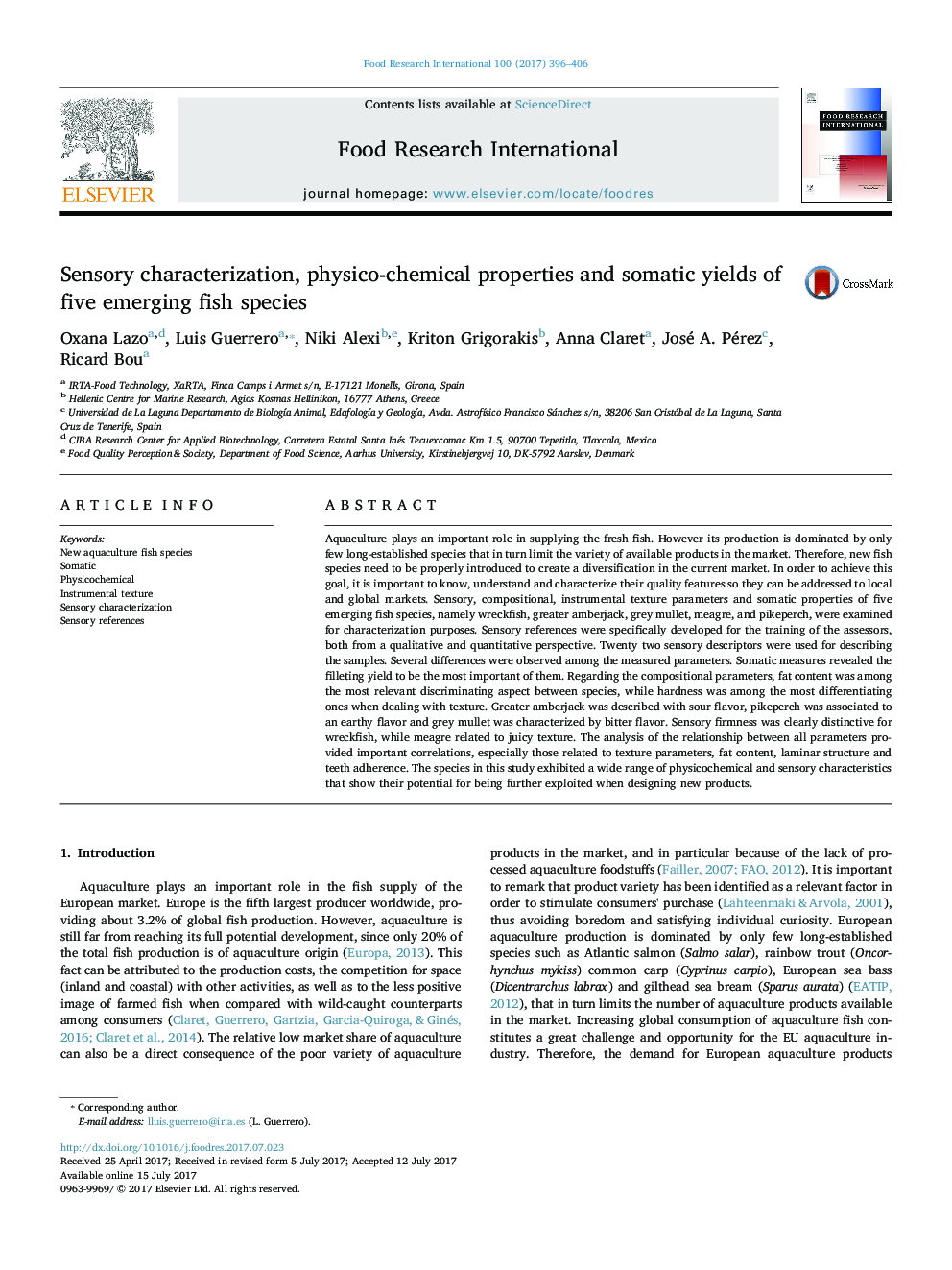| Article ID | Journal | Published Year | Pages | File Type |
|---|---|---|---|---|
| 5767989 | Food Research International | 2017 | 11 Pages |
â¢Somatometric, compositional, textural and sensory features of emerging fish speciesâ¢Texture of fish species depended on the instrumental method applied.â¢Texture and fat content showed important differences between species.â¢References seemed to improve the relationship between instrumental and sensory data.
Aquaculture plays an important role in supplying the fresh fish. However its production is dominated by only few long-established species that in turn limit the variety of available products in the market. Therefore, new fish species need to be properly introduced to create a diversification in the current market. In order to achieve this goal, it is important to know, understand and characterize their quality features so they can be addressed to local and global markets. Sensory, compositional, instrumental texture parameters and somatic properties of five emerging fish species, namely wreckfish, greater amberjack, grey mullet, meagre, and pikeperch, were examined for characterization purposes. Sensory references were specifically developed for the training of the assessors, both from a qualitative and quantitative perspective. Twenty two sensory descriptors were used for describing the samples. Several differences were observed among the measured parameters. Somatic measures revealed the filleting yield to be the most important of them. Regarding the compositional parameters, fat content was among the most relevant discriminating aspect between species, while hardness was among the most differentiating ones when dealing with texture. Greater amberjack was described with sour flavor, pikeperch was associated to an earthy flavor and grey mullet was characterized by bitter flavor. Sensory firmness was clearly distinctive for wreckfish, while meagre related to juicy texture. The analysis of the relationship between all parameters provided important correlations, especially those related to texture parameters, fat content, laminar structure and teeth adherence. The species in this study exhibited a wide range of physicochemical and sensory characteristics that show their potential for being further exploited when designing new products.
Graphical abstractDownload high-res image (171KB)Download full-size image
